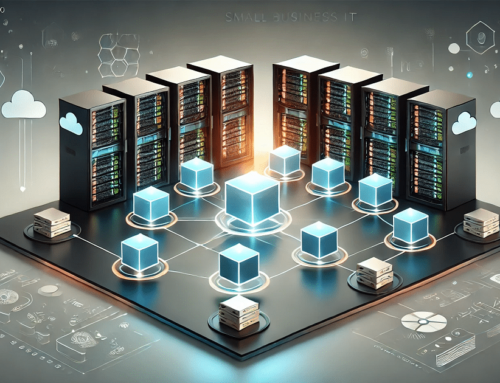“If you’re a CIO today, basically you have no choice. You have to do edge computing and cloud computing, and you have to do them within budgets that don’t allow for wholesale hardware replacement…”
For a while there, it looked like corporate IT resource planning was going to be easy. Organizations would move practically everything to the cloud, lean on their cloud service suppliers to maintain performance, cut back on operating expenses for local computing, and reduce—or at least stabilize—overall cost.
Unfortunately, that prediction didn’t reckon with the Internet of Things (IoT), which, in terms of both size and importance, is exploding.
What’s the “edge?”
It varies. To a telecom, the edge could be a cell phone, or a cell tower. To a manufacturer, it could be a machine on a shop floor. To a hospital, it could be a pacemaker. What’s important is that edge computing allows data to be analyzed in near real time, allowing actions to take place at a speed that would be impossible in a cloud-based environment.
(Consider, for example, a self-driving car. The onboard optics spot a baby carriage in an upcoming crosswalk. There isn’t time for that information to be sent upstream to a cloud-based application, processed, and an instruction returned before slamming on the brakes.)
Meanwhile, the need for massive data processing and analytics continues to grow, creating a kind of digital arms race between data creation and the ability to store and analyze it. In the life sciences, for instance, it’s estimated that only 5% of the data ever created has been analyzed.
Condusiv® CEO Jim D’Arezzo was interviewed by App Development magazine (which publishes news to 50,000 IT pros) on this very topic, in an article entitled “Edge computing has a need for speed.” Noting that edge computing is predicted to grow at a CAGR of 46% between now and 2022, Jim said, “If you’re a CIO today, basically you have no choice. You have to do edge computing and cloud computing, and you have to do them within budgets that don’t allow for wholesale hardware replacement. For that to happen, your I/O capacity and SQL performance need to be optimized. And, given the realities of edge computing, so do your desktops and laptops.”
At Condusiv, we’ve seen users of our I/O reduction software solutions increase the capability of their storage and servers, including SQL servers, by 30% to 50% or more. In some cases, we’ve seen results as high as 10X initial performance—without the need to purchase a single box of new hardware.
If you’re interested in reducing the two biggest silent killers of your SQL performance, download a free 30-day trial of DymaxIO fast data software and boost your I/O performance now.
If you want to hear why your heaviest workloads are only processing half the throughput they should from VM to storage, view this short video.





Hi Bill!
Thanks for taking the time to comment. You make some great points.
Condusiv
Not everyone wants the Internet of Everything. This means much more radio frequency
signals. THis is a HEALTH ISSUE. Many people are effected by too many radio frequency signals. Smart Meters on Utility lines cause health and sleeping problems like my grandchildren when smart meters were installed two years ago. Others shut down routers and WiFi at night to stop interference of sleep patterns.
I have my router on a timer to shut it down at night. The next generation of phones will require many more radio towers that are closer to residential neighbors.
There is already evidence that the current radio signals can effect brain cancer. One doctor has treated a young lady who was used to putting her phone in her bra when not using it. The Breast cancer she got was exactly where the phone was placed in her bra.There is already too much breast cancer without adding to it. I have to change which side (hip) I carry my phone as it causes hip pain or discomfort. I also take it off my body in the evening when I am not moving too much to avoid this.
I am opposed to more radio frequency than we already have. There needs to be some regulation on more radio frequency. Computers have enough already, just bring your AM radio close to the computer to pick it up. Sometimes just being in the same room will interfere with radio reception of AM stations. The Internet of Everything will degrade our health, increase our health cost and shorten our lives. I am a scientist with a M.S in Nutrition and Biochemistry.